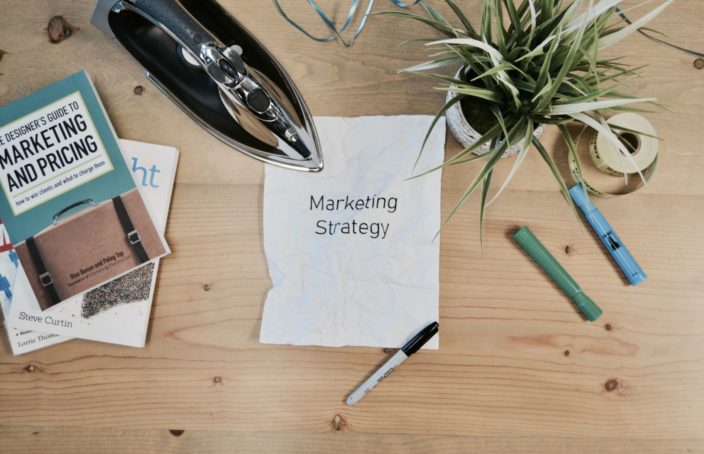Three Marketing Plan Success Stories To Inspire You
As you know, Teik Oh Dot Com offers an online workshop program called SMART Marketing to help busy small business owners write their focused marketing plan . It is based on my book of the same name available from Amazon.
You will also have read and seen my blog posts and YouTube videos on the 7 easy steps to follow to write your focused and actionable marketing plan to grow your sales, and you may even have subscribed to my freebies on winning more customers using the SMART Marketing Plan techniques (if you haven’t you can get them here for free). Teik Oh Dot Com is all about giving small business owners practical and useful tools to improve their businesses and build success.
One of my subscribers who read these posts suggested that I write about some examples of how people used the SMART Marketing Plan formula to increase their sales.
What a great idea! I’m calling you out, Richard!
So here are some marketing plan success stories to inspire you.
The first example is Jeannine. She came to me for a one-to-one consult in order to design a marketing plan for her idea about a new business. This was many years before I created the SMART Marketing Online Program and she paid my going one-to-one price at the time. If only the SMART Marketing Program was ready, she could have saved thousands!
Jeannine did not have a background in sales, but she presented well and was fantastic in her ability to open conversations. I saw that she had a determined and driven personality so important in following your ideas in your business. Her new idea was to create customised corporate gifts using a craftsman specialising in making beautiful presentation boxes made out of local timber or repurposed timbers. She had signed up several local premium products that could be incorporated into the gift from premium wine labels to coffee-table books and jewellery and other arts and crafts.
I took her into seven real-life one-to-one workshops to develop her marketing plan. For those of you who have only just joined me, the SMART Marketing program is a 7-step formula to write your marketing plan by gradually filling in the blanks to come up with a focused delivery of what really matters to those who really matter. The seven steps are: –
- Identify your real product – in this step, you look at your product or service from the eyes of the customer. You tear apart the usual “features” of the product (“stainless steel”, “motorised”, etc.) and start describing the benefits of your product (“lasts a lifetime”, “fast”, etc.) and in terms of what needs of the customer that it satisfies (“stop worrying”, “finish quick and go back to party”, etc.).
- Identify your real market – people often think that they should try to sell to the masses, that the more people they try to sell to stacks the odds they’ll get a sale. Unfortunately, if you try to sell to everyone then you appeal to no-one because your message will be too broad. You need to know exactly who your target market is in order to understand their needs for your product’s benefits and focus your appeal to them by preparing clear messages that appeal to the target group.
- Match your offer to the target market’s requirements – you need to examine your whole business to see how it can meet your target market’s requirements, not just your product. How do they like the product delivered? What kind of after-sales service do they appreciate? Is there a “look” to your badging or physical premises that attract them?
- Use your selling price as a factor in marketing – while pricing your product to make a profit, make sure the price fits into your target market’s needs. After all, whoever heard of a luxury brand selling cheap products? Have you ever seen a two-dollar store sell Rolex watches?
- Identify your marketing activities – from a whole range of marketing activities (and advertising is only one of them) identify the ones that attract your target market. Does your target market prefer seminars? Will they like advertisements in their professional magazines? Will free try-before-you-buy product offers meet their buying style?
- Develop your campaign plan – information is king but information without a plan is useless. In this step, you put together a focused and targeted calendar of marketing events and activities designed to attract people into your sales funnel, qualify them as targets, and then make the sale.
- Finalise and implement – put the plan together into an actionable document that you can refer to on a day-to-day basis with detailed steps and action plans. Ensure that part of this process is to schedule monitoring and evaluation reviews so that you can check the outcomes of each marketing activity and tweak your campaign to really focus on what works.
When we first started I could sense her impatience.
All Jeannine wanted to do was to work out how to get through the doors of CEO’s and major companies to show them her product. When I started asking her about what her product actually meant to customers and drilled down into what kind of feelings they would have for it, I think I nearly lost her! But to her credit, she swallowed her impatience and carried on. As we entered into steps 3 and 4, she was starting to “get it”. She saw that marketing was not about selling but about making everything about your brand fit into the desires of the target customer and that identifying the real target was important.
Jeannine saw, for example, that she had been wrong trying to get appointments with every head office in town. Her locally-made products using high-end local components were really suited as corporate gifts by blue-chip companies to third parties – government officials, international customers, and so on – that showcased local products and local crafts. They would be wasted on companies that had a mainly local customer base themselves or companies that made gifts to internal staff. Once she saw that, she was able to reduce the number of people she would call on, and focus her messages to their need to impress external recipients of corporate gifts and with gifts that would extoll the virtues of dealing with local companies. In many cases, the gifts were introductions to what local companies could do.
At the end of the process, Jeannine commented that she was amazed at how the wide grab-bag of information gathered at the start was, and how it was able to be gradually honed down to end up with a very focused target list, an extremely tight message that even included scripts, a clear look for the branding in her brochures and samples, and the 4 or 5 specific feelings she was trying to evoke in the customers. The target list was not as long as she had anticipated, but she felt good about narrowing it down because she was confident that with the right approach, they would buy, and they would buy in steady quantities.
Jeannine was able to identify people she already knew (from her luxury goods suppliers) who knew contacts in her target companies, get them to provide first-contact, then follow up with carefully crafted brochures and small sample gift boxes. Before SMART Marketing Jeannine was trying to impress the CEO’s and get them to make the buying decision. However once she knew who she should actually target, in her campaign, she understood that the best route for her sales funnel was to impress the most senior person she could contact, and then qualify the secondary person who would evaluate the product and actually make the ultimate decision. So, she designed her campaign accordingly and scheduled a series of sales-funnel meetings across 12 months. She set targets and objectives (3 initial meetings with senior managers every month for 6 months where 2 out of 3 would agree to set up a second meeting with the person responsible for buying). She set up follow-ups with the decision-maker and prepared different messages (showing them how her success was their success in the eyes of their bosses).
Being very focused and targeted helped Jeannine land 11 contracts in the first year, with an average of 14 buys a year each at $1,200 per buy. That’s first-year sales of over $180,000 starting from zero!
Repeating the process, her second year achieved nearly $300,000 in sales, but that’s another story!
Jeannine found that the 7-step SMART Marketing process afforded her an easy formula to sell to people who really counted what they already wanted to buy. She became so successful that she sold her company a few years’ later to start a new career as a marketing consultant!
Another example is that of Susan who joined the SMART Marketing program in 2016. I did not know Susan before this and she joined my program through a Facebook ad so she was taking a leap of faith (most of the buyers of SMART Marketing have followed and enjoyed my blog posts for years and knew of my story of building business-improvement products from my years’ of experience working with small businesses).
The SMART Marketing program is a dripped program which means that one module is released every week over five weeks (but in between launches I do allow new members to get the whole course at once). The timed releases mean that people can work on one or two of the steps and then have a week to implement what they have done without being overwhelmed.
When Susan joined and worked on the Introduction and step 1, she was totally new to the theories about marketing but she wrote to me and said that she appreciated the step-by-step approach in the workshops and felt that she didn’t need to know the theories as the program just led her through what she needed to do.
When she got to step 5, all about identifying the most appropriate marketing activities, it all fell into place for her.
Susan has run a yoga school for a number of years. When she defined her target market, she discovered that it consisted of 45-55-year-old women living in the suburbs closest to her studio, who were empty nesters, and now had time to spend on themselves. They found that her yoga techniques gave them a gentle fitness program while allowing them “quiet time” to rediscover their emotional wellbeing through the gentle breathing exercises and the opportunities for mindfulness during yoga poses.
Initially, she had thought that her best market might have been all women, those who wanted to relax from busy lives either as executives or as busy mothers. In working out her real target market, she did undergo a moment of FOMO (“fear of missing out”) thinking she was excluding a lot of potential customers, but she persevered after researching the potential numbers within her suburb alone that fitted into her demographic.
This discovery changed the way she structured her classes (matching her target market requirements) as well as signage and message. All her brochures about fitness and looking good were replaced by brochures about mindfulness and “rediscovery”.
With this knowledge, she identified in step 5 that her most appropriate marketing activities were not in letter-drops, advertising or signage, it was all about word-of-mouth and the ability to undergo the experience. So, she focused in and only concentrated on two marketing activities. The first was a “Find a Friend” program. She offered all her existing customers a free class for every new customer they referred to her. For every new customer, she offered a “Try Then Buy” program. Every new customer, whether referred or off the street, was able to participate in their first class for free. At $85 per session, she could lose up to $170 in fees for every new customer, but she knew that once a customer liked her class for the benefits they sought, they would attend an average of 1 class per fortnight for at least a year. This meant that for every $170 lost in fees she stood to gain $2,210 in fees over the year.
Best of all Susan’s Find a Friend program took nothing other than handing out a leaflet to her customers after class.
Her second marketing activity was to publicise her Try Then Buy program as a stand-alone program. She knew (from examining past results) that if she targeted her target market and that if they tried her class, they would immediately feel the benefits of quietness and reflective healing, and would come back regularly. Being that her target market consisted of 45-55-year-old women, she discarded local school events (too-young mums) and local business groups (too-busy executives) and instead sponsored events at local bowling clubs, bake sales and art galleries where she figured her target cohort hung out.
She sponsored events by providing a pop-up class at events and then handing out Try Then Buy brochures. She attended art gallery openings and with some quiet music playing did a few yoga poses on a small stage in the corner as a continuous display for patrons. These activities were not frequent, but frequent enough to attract some women into her sales funnel (“come to a class, try it out for free, you’ll be hooked”).
Again, these marketing activities not only put her in front of her target market, but they also cost very little.
Susan’s Find a Friend program doubled the number of her customers within 2 months! Her existing customers were already raving fans and given the opportunity to tell others what they liked, they referred friends in a frenzy! The advantage was they referred people like themselves, which means that the new referrals were already pre-qualified.
Her Try Then Buy program was a little slower, and in fact, after a scheduled monitoring and evaluation session built into her SMART Marketing Plan, she decided to drop the stand-alone Try Then Buy program and instead concentrate only on the Find a Friend program, which already included Try Then Buy for the referral.
In the first year of her SMART Marketing campaign, she got enough new customers to increase her classes from 2 days a week to 5 days a week, achieving her goal of being able to run her classes full time. Now in her third year of implementing her SMART Marketing Plan, Susan is looking to hire a second yoga instructor.
Our third example is Jeff.
Jeff owns a small auto-mechanic workshop and employs 2 mechanics and 2 apprentices, as well as his wife as the receptionist/bookkeeper.
He bought the SMART Marketing online workshop program in 2018 by directly contacting me after he had received a newsletter about SMART Marketing. As a loyal recipient of my blogs sent out by email, I directed him to the online purchase of the program, but then offered him some private reviews of his work as he completed each module. I do little bonus things like this for my loyal readers and watchers!
Jeff is the typical small business owner – busy and time-poor, motivated by an inner understanding of his vision, a little frustrated that he spends too much time working in his business rather than on it, interested in new processes that could improve his business. However, he set up the time to spend on the program, which is often the first hurdle.
As he worked through it and received my reviews, he worked out that his real product was not auto-mechanical repairs or regular servicing, it was peace of mind and value for money. His customers most appreciated the fact that he explained what work was done, what may be needed in future, and the chances it would be needed. This also gave them value for money for a service they’d rather not have other than getting peace of mind after getting it.
He also realised that his target market was specifically car owners who owned older cars more than 10 years old, who lived within 15 minutes’ drive away, who were feeling ripped off by dealership garages, who wanted a personal touch, and who understood only the basics of car mechanical workings. Apart from wanting peace of mind and value for money, they needed to feel a connection and being valued. After all, most of them would not have a real idea of what changing an oil filter really did for their car, but if they were greeted personally and shown the discarded oil filter in its dirty state, they could appreciate that the work was done specially for them and it meant that their car was “better”.
Jeff then changed up his meet-and-greet procedures where customers were greeted only by him or his wife who had a script on greeting that identified the customer by name, identified their car, and walked through what work was to be done, and when it would be ready. He made sure that the reception area and forecourt were immaculate and trained his mechanics to smile at customers no matter how busy they were. He especially made sure that his procedures meant that all work was done at the time promised. He then changed the pickup so that only he or his head mechanic met the customer and showed them any parts replaced, explaining why this improved performance and reliability. He made sure the customer’s requirements were met.
His pricing was comparable to his competitors because the margin on wages and parts was not flexible. However what he did to use his price as a marketing factor was firstly to quote fixed standard prices for standard services, and he made sure that he always threw in an extra bonus whether this was a key-fob or a free vacuum and wash, or for more expensive bills, a free bottle of screen wash or something similar.
Jeff identified that he got most of his customers from his physical location on the main road attracting drive-bys from signage, and from social media. He also found that about half his customers were late in booking in for regular servicing, often missing one out of every two. Through research (known as “homework” in the SMART Marketing program) he also discovered that advertising in local community newspapers had very poor returns. So, he decided on focusing his marketing activities on getting customers to buy regularly, boosting the messaging on his signage, and advertising on social media.
To do this Jeff offered his customers a frequent flyer program where they got a free oil change after every 10 visits. He changed his signage so that they were more prominent (placement as well as size and colour) and made sure they contained messages about peace of mind and value. He also placed ads on Facebook and Instagram targeted at people who were within 15 minutes drive of his site and who owned 10 plus-year-old cars, giving messages about credibility, reliability, peace of mind, value and personal service. His campaign plan was rolled out immediately as it did not contain time-specific events that needed to be scheduled. His sales funnel was simple – people need something done to their car, these become interested in his messages, they try him out, they like the personal service and focus on peace of mind, they stay.
As part of the implementation, I helped Jeff to put together a monitoring and evaluation schedule that included gathering information from his customers – a simple Q&A they ticked off as they picked up their car rewarded by a lollipop! He gathered information about how they heard of him, what attracted them to him in the first place, what they looked for, how they think he did on a 5 item checklist. Within scheduled reviews, Jeff analysed this information and continued tweaking his frequent flyer program, his messaging, and even the colours and content of signage.
Jeff found that growing his sales was steady progress. No. he didn’t double his sales in a year. But he did find that whereas he was either stagnant in past years or growing by small percentages (then losing sales in subsequent years), he was increasing sales by 2% or 3% every month, month on month.
“Somethin must be working,” he said to me recently with a twinkle in his email voice.
So, there are three success stories about how Jeannine, Susan and Jeff applied the SMART Marketing formula and grew their sales.
I hope these stories will inspire you to consider your own marketing in general and your practical, actionable marketing plan specifically.
You can do it – you know your business inside out, as the people in these success stories have shown – all you need is the right formula to put your knowledge together and the guidance on how the formula applies on a step-by-step basis. The SMART Marketing program does this for you. It is not an “online course” that lectures you on what to do, and then leaves you to it. It is designed as a workshop where you are led through the steps to take as you develop your plan.
If you’re not quite ready to prepare your marketing plan (and why not, leaving all those potential customers untouched?) you can check out my three-freebie taster – a report on How To Win More Customers By Pressing Their Hot Buttons, a video-training on How To Keep Your Customers Loyal By Loving ‘Em To Death, and a free video-training on The 7 Easy Steps To Creating Your Targeted Marketing Plan. You can get these here for FREE!
And don’t forget, if your preference is to slowly read about how to do it, my popular Book called “SMART Marketing – 7 Easy Steps to More Sales” is available on Amazon. You can even get the accompanying Workbook filled with all the worksheets to develop your SMART Marketing Plan from Amazon as well.






No comments yet.
Add your comment